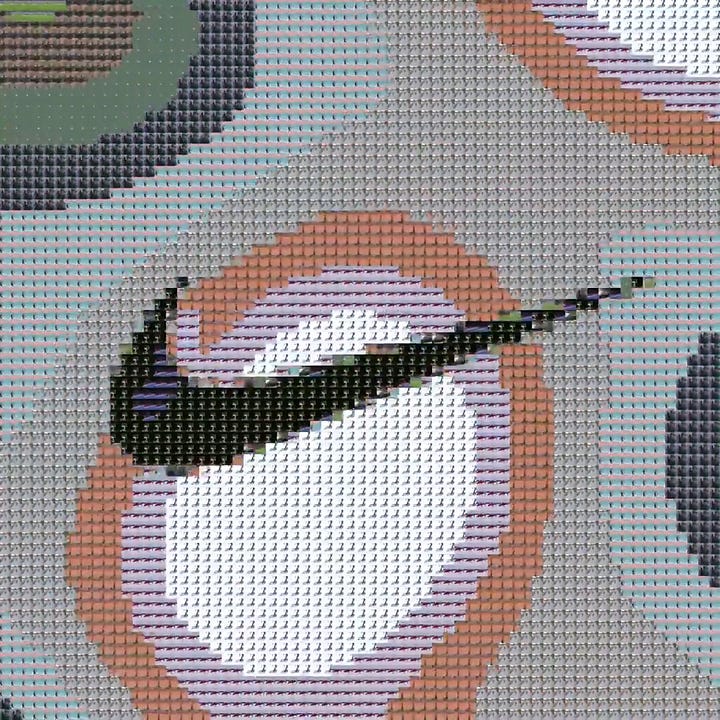Not just a brand book
Design Business Company on building brand systems that learn, adapt, and scale
The traditional model goes something like this: build the brand system, hand it off, walk away. It’s a model optimized for moments, not motion, and not for how software companies move today. New products launch. Teams grow. Priorities shift. And the gap between what was designed and what gets used gets wider.
Design Business Company (DBCo) is closing the gap. Founded by Judson Collier, Stewart Scott-Curran, and Jordan Egstad, the studio designs brands, but also the tools that help them evolve. They want to go beyond logos or decks, to systems that adapt, generate, and scale—tools built for how software companies actually work: fast, cross-functional, and in motion.
From rebrands to systems that last
The founders met in-house at companies like Instrument and Loom. Each had seen brand work that launched strong and then stalled. “Join the company, build the team, do the rebrand, optimize the rebrand,” says Stewart. “Then what?”
The problem was the cycle. Teams shipped polished systems that didn’t hold up. Agencies handed off locked files. Internal teams couldn’t keep pace. Meanwhile, more people joined. Work slowed down. Budgets ballooned. “We saw an opportunity to build a studio that worked differently,” says Judson. “One that plugged into teams more naturally, rather than showing up with a ‘process™’ and then disappearing.”
A toolkit for a moving target
DBCo calls its approach a “brand data graph.” It’s a set of modular, adaptable systems designed to move as fast as the team. “We don’t just design brands,” Stewart says. “We also engineer how they work.”
One core tool is Construct, a framework that connects identity, UI, copy, and code. Change a variable, and the system updates everything, from decks to specs, docs to outputs. “A brand isn’t static,” says Stewart. “Its tools shouldn’t be either.” Another is Pal(ette), a color tool that generates perceptually uniform scales, while also ensuring accessible color contrast.
The work is still early, but DBCo is also testing Slack bots that surface the right logo file without a Dropbox scavenger hunt, dashboards for testing messaging before it goes live, and frameworks for teams to produce on-brand work.
Some of DBCo’s most interesting tools are one-offs, built for a single brief, then left to live in the wild. For Nike’s “Art of Victory” exhibition at the Centre Pompidou, the team created a TouchDesigner program to generate complex, layered visualizations on the fly. These weren’t off-the-shelf solutions; they were purpose-built, experimental, and designed to help them move fast.


“We’re still early on this kind of work, but it’s a good snapshot of how we approach creative problems: if no tool exists, we make it,” says Judson. “Sometimes the best way to get somewhere new is to build the map as you go.”
Brands that think
Their latest tools go further: brand copilots powered by custom-trained large language models. They started with DBCo’s own internal materials: writing guides, transcripts, docs. Then they began training models on client data: tone, messaging, strategy. By the end, their clients were able to walk away with their own brand copilot.
Ask about tone, and it pulls from guidelines and past examples. Feed it a product announcement, and it proposes caption options that balance voice and legal. In one project, they ran an A/B test. The client picked the AI copy over the human-written version—every time. “It’s a little scary, but also kind of thrilling,” Jordan says.
Keep the humans in the loop
Still, DBCo never cedes control to machines. “It hallucinates, forgets context,” Jordan says. Which is fine because the goal isn’t to replace designers or writers, it’s to give them better tools. Human skills—critical judgment, taste, storytelling—remain essential. The team stresses one axiom: “Resist the temptation to accept AI output without review.” Critiquing machine work demands the same rigor as critiquing human work. Every project starts and ends with human input. The real power lies in the prompt and the training data.
By automating repetitive tasks such as resizing assets, generating ad variants, updating docs, small in‑house teams reclaim hours each week. “Designers can spend more time on narrative, strategy, and craft,” Judson says. Fewer people, more output, higher quality, tighter timelines.
They’ve even built a GPT-based prompt writer. It asks better questions, clarifies intent, and returns high-quality prompts tuned to each brand. “Very meta,” Jordan says. But effective.
Beyond deliverables
The team admits that they’re still figuring out what this work can become. “We’re in the ‘don’t know what we don’t know’ phase,” Stewart says. “But we’re building through it.”
Some tools are open source. Some are experimental. All support the same belief: brand isn’t a moment. It’s a system in motion. The real work isn’t in the logo. It’s everything that comes after.
Not every company needs a custom system. Not every team needs a model. But more of them will. Soon. “Sooner or later, every designer and professional will have to reckon with AI,” Judson says. DBCo’s answer isn’t to hand off the brand. It’s to keep building with it. Because once the brand launches, the real work begins.
—Carly







After AI and was shaped for decades being fed by human pattern behaviour, is finally time so we can get some of it back and use it on individual and collective benefit.
Such an interesting piece. I am so intrigued by DBC that I now have to talk to them! Thanks for writing and sharing